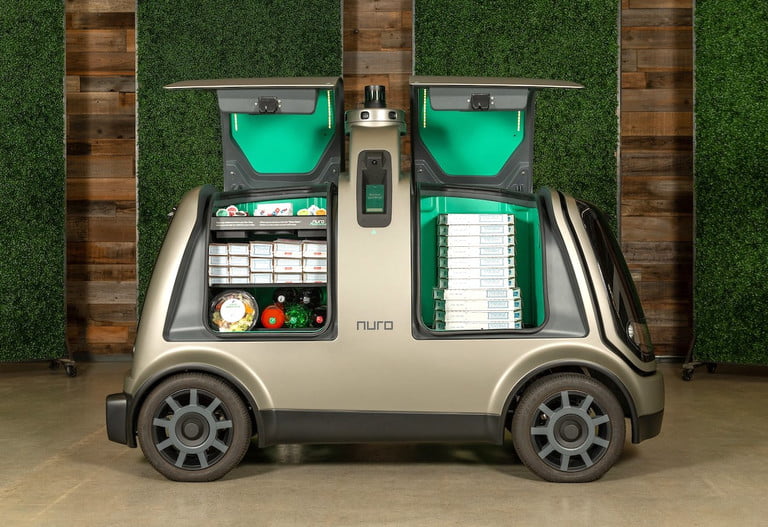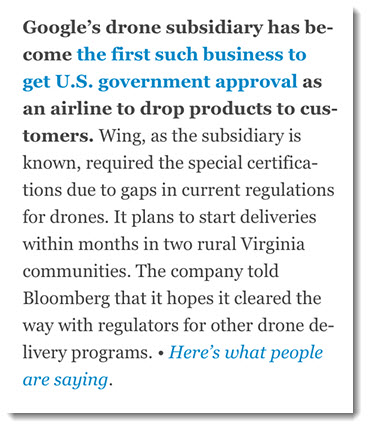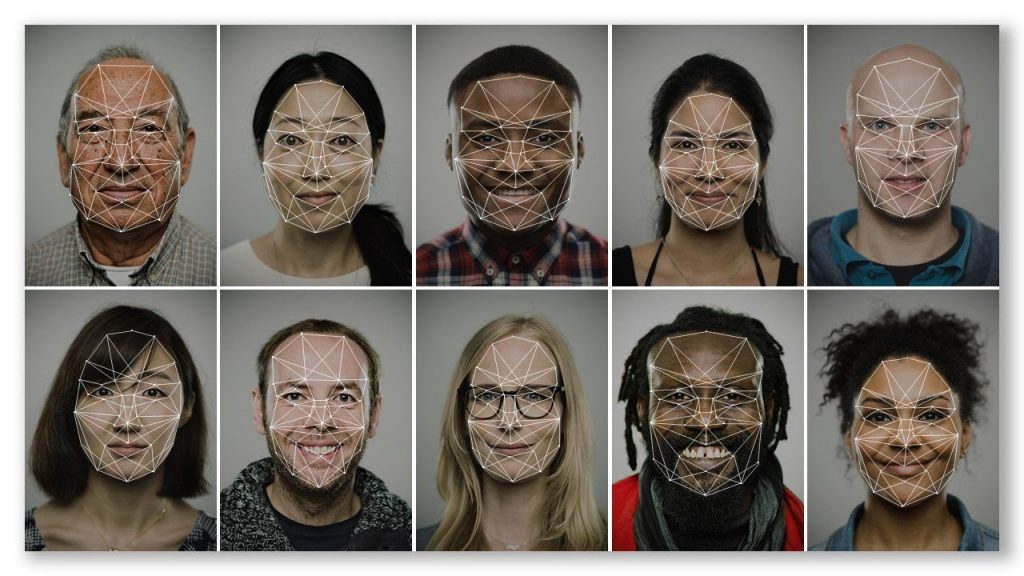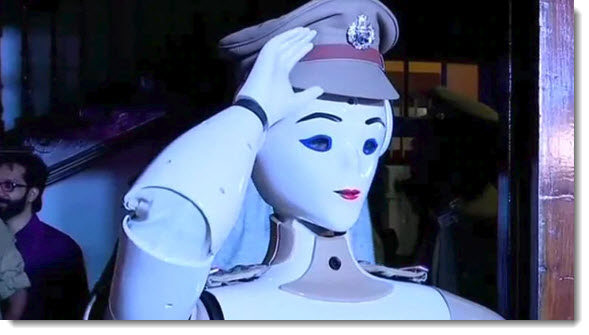Walgreens to test drone delivery service with Alphabet’s Wing — from cnbc.com by Jasmine Wu
Key Points:
- Walgreens is working with Alphabet’s drone delivery service Wing to test a new service.
- The pilot program will deliver food and beverage, over-the-counter medications and other items, but not prescriptions.
- Amazon said in June its new delivery drone should be ready “within months” to deliver packages to customers.
Add that to these other robots, drones, driverless pods, etc.:
- Autonomous robot deliveries are coming to 100 university campuses in the U.S. — from digitaltrends.com by Luke Dormehl
- Postmates Gets Go-Ahead to Test Delivery Robot in San Francisco — from interestingengineering.com by Donna Fuscaldo
- Amazon patents ‘surveillance as a service’ tech for its delivery drones — from theverge.com by Jon Porter
- This futuristic driverless pod will soon be delivering pizza in Texas — from digitaltrends.com by Trevor Mogg
- Amazon is creating detailed 3D models of suburbia to train its new delivery robots — from theverge.com by James Vincent
From DSC:
Is a wild, wild west developing? It appears so. What does the average citizen do in these cases if they don’t want such drones constantly flying over their heads, neighborhoods, schools, etc.?
I wonder what the average age is of people working on these projects…?
Just because we can…

















